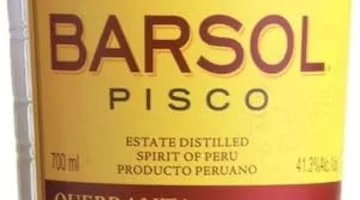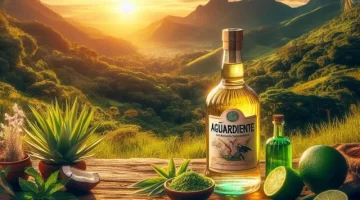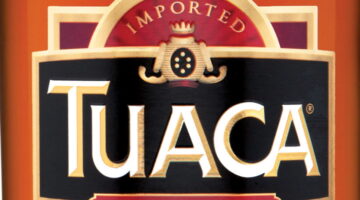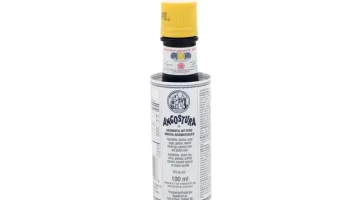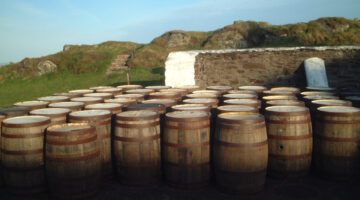Botany at the Bar
Travel Distilled reviews Botany at the Bar, everything you need to know about the art and science of making bitters and with over 40 recipes for cocktails, syrups, and shrubs.
Having recently been to visit The Botanist Gin on the Scottish island of Islay, and met their own botanist James Donaldson, I was naturally curious to read Botany at the Bar.
Botany at the Bar isn’t about the botanicals that go into gin, however. Its subtitle is ‘The Art and Science of Making Bitters’, and it’s about the botanicals that go into your favourite cocktails by way of bitters. It’s a subject that’s been a bit of a mystery to me, but this book is like a Bible on the topic so I’m now much better-informed.
Botany at the Bar – The Authors
You certainly couldn’t have authors more qualified than the three who jointly wrote the book. They’re the founders of Shoots and Roots Bitters, a craft bitters-making company in New York. The three are: Selena Ahmed, who is an Assistant Professor of Sustainable Food Systems at Montana State University; Ashley Duval, a scientific consultant for the United Nations on international agriculture; and Rachel Meyer, a plant evolutionary biologist at New York University who specialises in the evolution of food.
A Short History of Bitters
The book’s opening chapter is a short history of bitters, and shows that bitters actually have a very long history, going back not thousands of years but even longer. Our earliest-known ancestors in Africa, some two million years ago, drank fermented beverages which caused their livers to adapt to processing alcohol. It’s thanks to them that we can even drink alcohol at all.
The Ancient Egyptians, too, learned how to use plants to cure ailments and put goodness into the body. As an aside, I was once on a trip into the Sinai Desert in Egypt, led by Bedouin guides. One of my fellow travellers fell ill with a stomach upset. One of our guides wandered off into the desert and returned with a plant which he then boiled up and made into a tea. The sick guy drank the tea and quickly recovered.
On another trip hiking in Madeira, our guide talked about the plants and their beneficial effects. I’ve never forgotten what he said – that people describe natural remedies as ‘alternative medicine’ when in fact the natural remedies are the real medicine and the modern scientific medicines based on these are the alternative.
Bitters and the Planet
This is the title of Chapter Two of the book, and one thing I really like about it is that people who are interested in plants do have a concern for the planet we live on. They love plants, and want them to survive. When people talk about disappearing habitats, the focus is usually on the animal life, but disappearing habitat also means disappearing plants.
The authors point out that biodiversity is good for the planet, but it also means a bigger range of flavours to play with in your kitchen and bar. Caring for the planet isn’t just something that concerns hippy-dippy liberals in the wilds of Oregon, it also affects the drinks you can order in a hip New York bar and make for yourself at home.
Bitters and the Body
Another interesting section is about the effects that different bitters can have on the body, either on their own or in combination. The authors explain that a bitters made from caraway, fennel, and anise, has an antispasmodic effect, but just the essential oils from each one separately can actually have the opposite effect. Some bitters are good for digestion, though some you should take before a meal and others afterwards. Bitters can also relieve stress and anxiety.
Typos
It seems every book I read these days contains typos, which never used to be the case. In this one, among the ones I spotted were:
‘they tend to work one a few ways’
‘common examples are often found in bitter tonics include hops, valerian…’
‘a gentian extract we served at a bitters-making workshops.’
That third one is unfortunately the opening sentence of a chapter, and should really have been spotted by someone before publication.
The Bitter End
The typos shouldn’t detract from the book too much, as there really will be nothing you don’t know about bitters by the time you get to the end of it. There are plenty of recipes for making your own bitters, and a comprehensive Plant Directory, broken down geographically and telling you everything you need to know about each plant. It’s also very attractively designed, with lovely illustrations.
This won’t be a book for everyone. It will appeal to professional bartenders, chefs too, and to those home bartenders and cooks who really take their work seriously. The average person, though, is not going to be going out and buying a sonicator, or trying to replicate the more complicated recipes, but it still makes for a good read if you’re remotely interested in plants and their properties.






